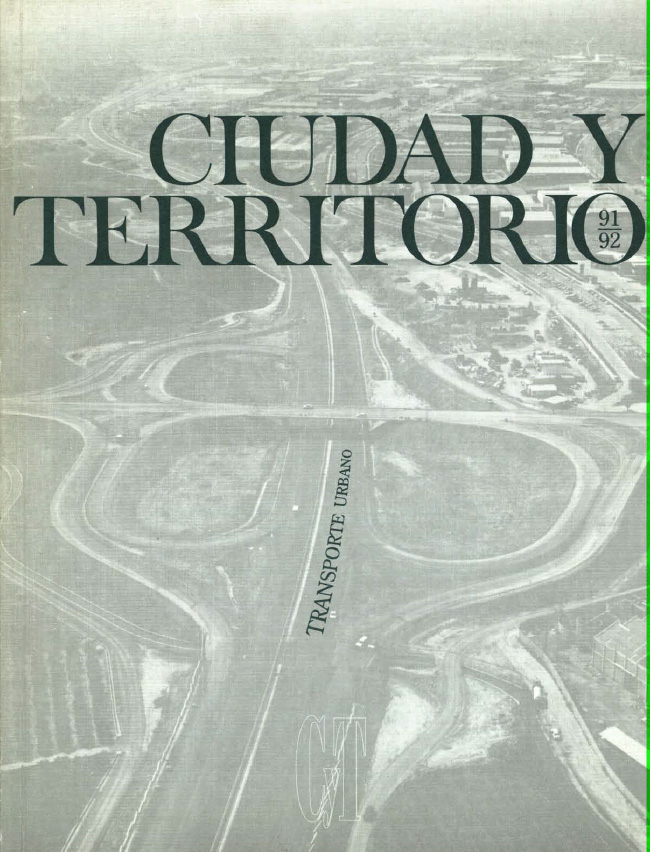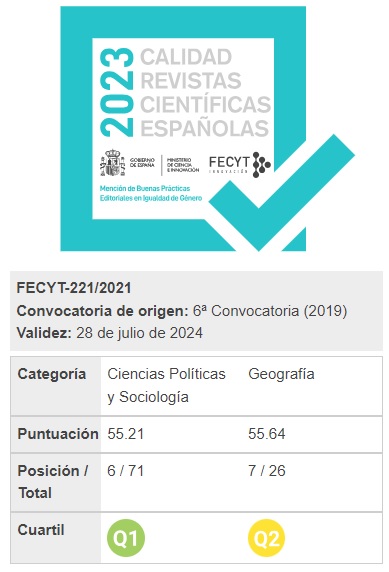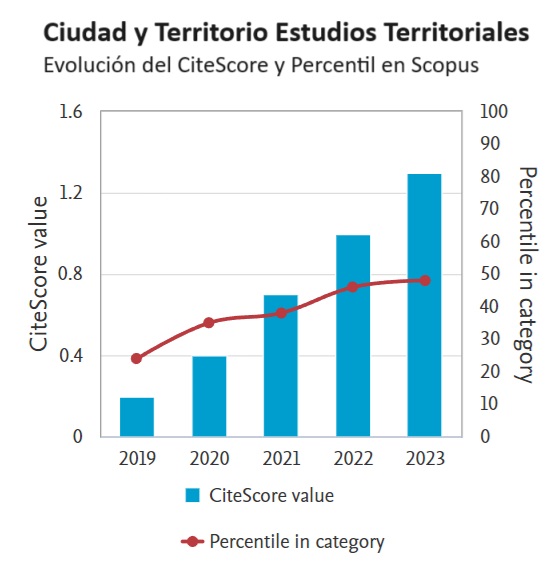TRANSPORT AND SPACE HANDLING AS WITHIN HISTORICAL CITY CENTRES: THE SPECIAL PLAN FOR THE OLD CITY DISTRICT OF LEON
Abstract
From an initial analysis of the transport problem as within historical city centres and of those policies and interventions that are in themselves here seen as a drag upon the achieving of an actualized standard of acceptable well-being, a methodology is thence developed as are criteria for the regulating of streets and mobility in such zones. The Madrid Plans For Preferential Intervention (P. I. P.) of 1988 and 1989 of the Madrid Housing Body are here closely examined as to their bearing on these questions. In the second part of the article a close examination is made of the study on transport and the ordering of public amenity space that formed a part of the Special Plan for the Regulating, Bettering and Protection of the Old City District of León, as here special care was given to granting special treatment, to the using of thoroughfares favourable to walkers, to the activities proper to the district and to both an improvement in the general tone there existing and a harmonizing of elements in terms of the historical characteristics of that place.
Downloads
Published
How to Cite
Issue
Section
License
Copyright (c) 1992 Carlos Corral Sáez

This work is licensed under a Creative Commons Attribution-NonCommercial-NoDerivatives 4.0 International License.
Considering the provisions of the current legislation on Intellectual Property, and in accordance with them, all authors publishing in CyTET give -in a non-exclusive way and without time limit- to the Ministry of Transport, Mobility and Urban Agenda the rights to disseminate, reproduce, communicate and distribute in any current or future format, on paper or electronic, the original or derived version of their work under a Creative Commons Attribution-NonCommercial-NoDerivative 4.0 license International (CC BY-NC-ND 4.0), as well as to include or assign to third parties the inclusion of its content in national and international indexes, repositories and databases, with reference and recognition in any case of its authorship.
In addition, when sending the work, the author(s) declares that it is an original work in which the sources that have been used are recognized, committing to respect the scientific evidence, to no longer modify the original data and to verify or refute its hypothesis. Author(s) also declare that the essential content of the work has not been previously published nor will it be published in any other publication while it is under evaluation by CyTET; and that it has not been simultaneously sent to another journal.
Authors must sign a Transfer of Rights Form, which will be sent to them from the CyTET Secretariat once the article is accepted for publication.
With the aim of promoting the dissemination of knowledge, CyTET joins the Open Journal Access (OA) movement and delivers all of its content to various national and international indexes, repositories and databases under this protocol; therefore, the submission of a work to be published in the journal presupposes the explicit acceptance by the author of this distribution method.
Authors are encouraged to reproduce and host their work published in CyTET in institutional repositories, web pages, etc. with the intention of contributing to the improvement of the transfer of knowledge and the citation of said works.








 Enlace a CyTET en Linkedin
Enlace a CyTET en Linkedin